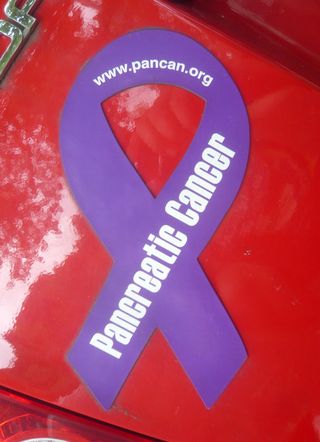 The more scientists study tumors, the more they realize what a complicated mess they are. Oncologists have generally thought that the stroma -- the non-cancer-cell part of the tumor – helps the tumor thrive by providing growth and survival factors. But the lab of Ben Stanger, MD, PhD, assistant professor of Medicine in the Division of Gastroenterology, Perelman School of Medicine, and colleagues, found just the opposite. The team showed in a recent Cancer Cell study that some tumor components, particularly fibroblasts, constrain growth, rather than fuel it. As a consequence, getting rid of these cells allows tumors to grow better.
The more scientists study tumors, the more they realize what a complicated mess they are. Oncologists have generally thought that the stroma -- the non-cancer-cell part of the tumor – helps the tumor thrive by providing growth and survival factors. But the lab of Ben Stanger, MD, PhD, assistant professor of Medicine in the Division of Gastroenterology, Perelman School of Medicine, and colleagues, found just the opposite. The team showed in a recent Cancer Cell study that some tumor components, particularly fibroblasts, constrain growth, rather than fuel it. As a consequence, getting rid of these cells allows tumors to grow better.
Nature describes the work this way: “Two groups have found that certain non-cancerous cells that surround a tumour in the pancreas keep it in check, even though these cells seem to boost other types of cancer.”
Tumors consist of mutated cells (the actual “cancer” cells) as well as non-mutated stromal cells that the tumor has recruited. Stromal cells form the framework of an organ, and in the case of a tumor, are composed of connective tissue and blood vessels. In particular, fibroblasts make up a large portion of the stromal cells.
The assumption has been that the fibroblasts are recruited by the cancer cells to give them something back - some factors that the cancer cells need to promote growth. “This has been the prevailing paradigm in the tumor microenvironment field for some time,” notes Stanger.
Pancreatic cancer produces a lot of scar tissue and inflammation, unlike some other types of cancer. When the team got rid of the scar tissue tumors grew more quickly and aggressively.This scar tissue is essentially a large collection of fibroblasts, explains Stanger. The fibroblast-rich stroma comprising many tumors is, in essence, a big scar. In mice in which this fibroblast-rich stroma was eliminated, tumors developed earlier and the animals died sooner.
The team used an improved mouse model of pancreatic cancer. In past studies, mice with compromised immune systems with implanted tumors that don’t closely resemble human pancreatic cancer had been used. Mice expressing the two most common mutations found in pancreatic cancer were used for the Cancer Cell study, and they developed tumors on their own. The cancerous tissue in these newer experimental mice looks and acts more like human pancreatic cancer.
“What we showed is that when you get rid of cancer-associated fibroblasts by inhibiting the protein hedgehog -- the cancer-derived signal that recruits these cells to a tumor in the first place -- you end up with tumors that grow more aggressively than the tumors that do have fibroblasts,” says Stanger.
This was an unexpected result, he says. “We think that getting rid of the fibroblasts allows the tumors to become better vascularized through angiogenesis,” he says. “We don’t exactly know why – it could be stiffness, or that the fibroblasts make something that inhibits blood vessel growth so that getting rid of the fibroblasts allows blood vessels to grow. The important point to make here is that tumors without fibroblasts are more susceptible to angiogenesis inhibitors because they have a greater dependence on blood vessels.”
The team also looked at human pancreatic tumors and found that roughly 10 percent of them have a high density of blood vessels. Because this is similar histologically to the mice lacking fibroblasts, and because these mice respond to angiogenesis inhibitors, this type of therapy could be effective in this subset of patients, says Stanger.
The study was done in collaboration with Ken Olive’s laboratory at Columbia University, and reflects the work of Andrew Rhim, a former postdoctoral fellow in the Stanger lab (now an assistant professor at the University of Michigan), and Paul Oberstein and Dafydd Thomas in the Olive Lab.